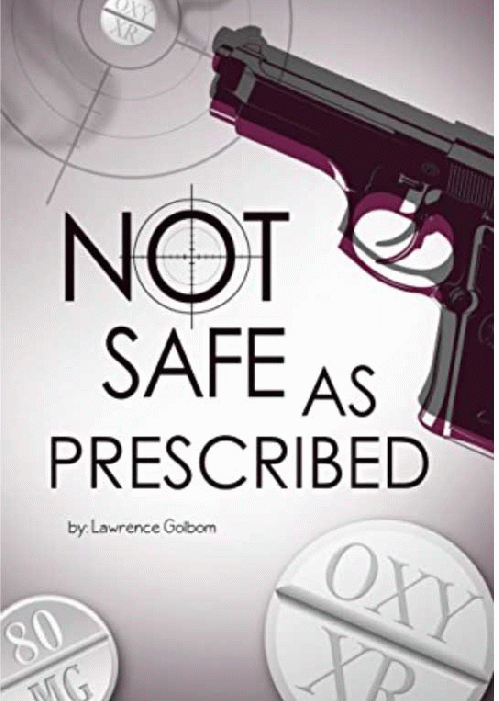I recently interviewed Lawrence Golbom, author of Not Safe As Prescribed.
Rosenberg: I found Not Safe as Prescribed to be a page turner. You captured the Pharma marketing apparatus from creating new "diseases," bribing doctors and duping the FDA to phony patient groups, misleading research and the revolving doors between government officials and industry. You also really showed the connection to today's heroin epidemic. Did you have to do a lot of research to get so many details right?
Golbom: Well, really the facts are out there. For seven and a half years I hosted a radio show called Prescription Addiction Radio and we had, as guests, Congressmen, medical experts, addiction experts, policy people, family members and affected patients who all exposed these practices. I am also a pharmacist by profession. In Not Safe as Prescribed, I simply tried to fill in what I imagined drug executives, the people behind these actions, were saying behind the scenes. I never dreamed I would write a book, but in the U.S. our growing drug culture for both legal and illegal drugs is affecting every community, person, family member or a friend. Everybody knows somebody struggling from too many drugs. That was my motivation.
Rosenberg: Not Safe as Prescribed is based on actual events that have helped Pharma establish its current dominating influence on Americans' lives. As a reporter, I certainly knew about how the Sacklers, a New York family of physicians and philanthropists, parlayed their lucrative morphine franchise into OxyContin which they said they did not want to be "limited" to cancer pain. But the Sacklers, called the Mucklers in your book, also put benzodiazepines, notably Valium, on the map for Mr. and Mrs. Front Porch which I did not know.
Golbom: In Not Safe as Prescribed, Arturo learns the family's new methods of marketing drugs from his father; in the case of the Sackler family, brothers Raymond and Mortimer learned from their older brother Arthur. He is credited with finding enough different uses for Valium to turn it into the first drug to make $100 million and creating tit-for-tat, reciprocity relationships with doctors, now the U.S. norm. The three Sackler brothers bought Purdue Pharma, who makes OxyContin, in the 1950s.
Rosenberg: Your book shows the insidious but successful transition in the 1960s of prescription drugs for a few to appropriate for everyone--because everyone has stress, frustration, blue days etc. In those days "housewives" and "businessmen" needed psychoactive drugs for their daily stresses. What I found chilling was how the same umbrella marketing has created the current opioid addiction epidemic.
Golbom: Yes. Soon after the launch of OxyContin in 1996, Pharma was able to have pain designated as the "fifth vital sign" to be monitored just like blood pressure. Suddenly almost everyone had pain and the new, field of "pain medicine" staffed by "pain management doctors" was born and monetized. We know what happened then. Estimates say more than 91 people a day are dying from opioids or the heroin they turn to when they can't get opioid drugs. A part of my book highlights the sad state of the treatment of our veterans from the VA. Last estimates were 22 veterans a day were committing suicide. In my opinion, a direct result of the VA's penchant for prescribing too many pills.
(Note: You can view every article as one long page if you sign up as an Advocate Member, or higher).






